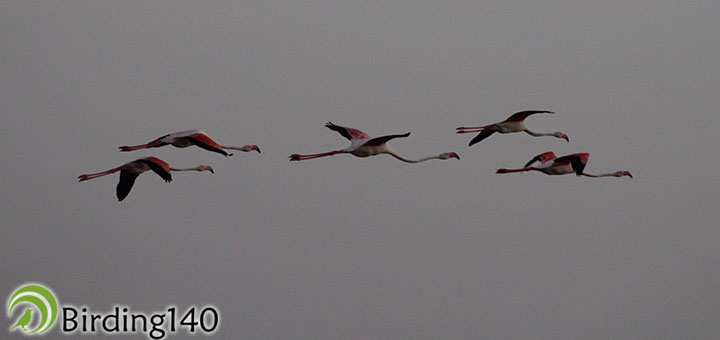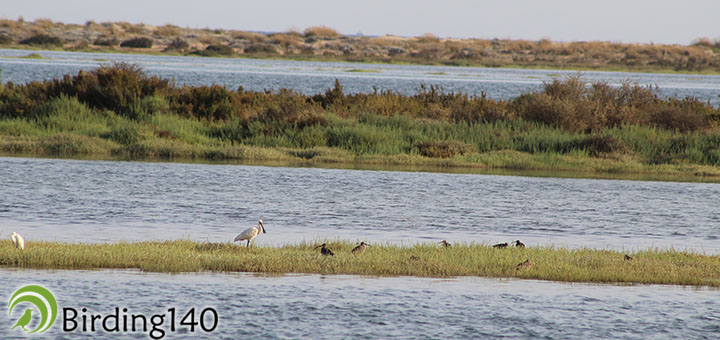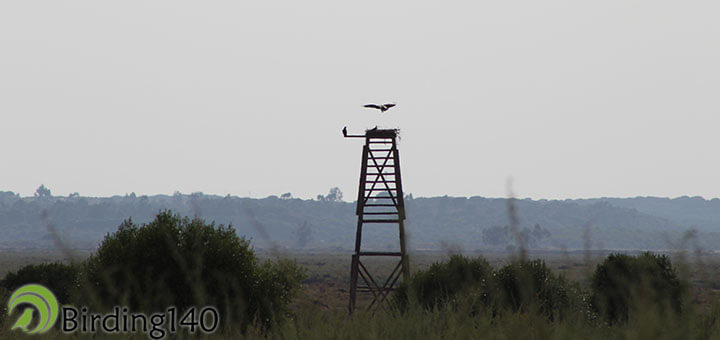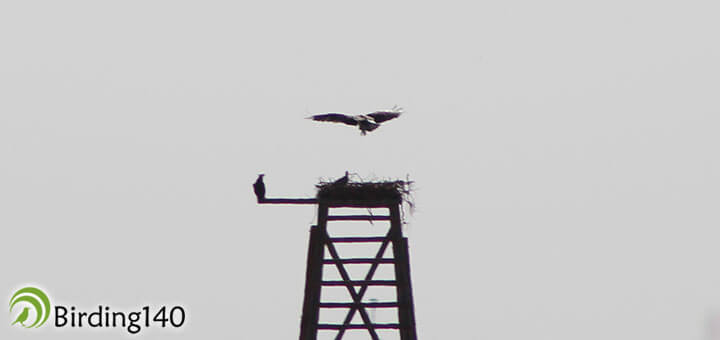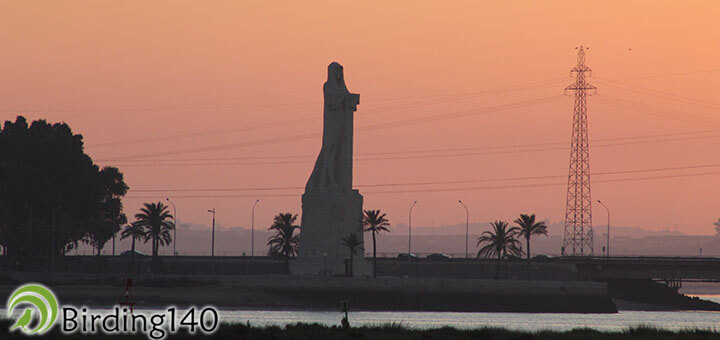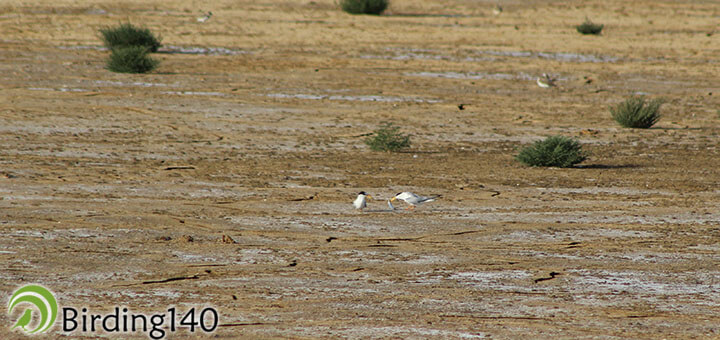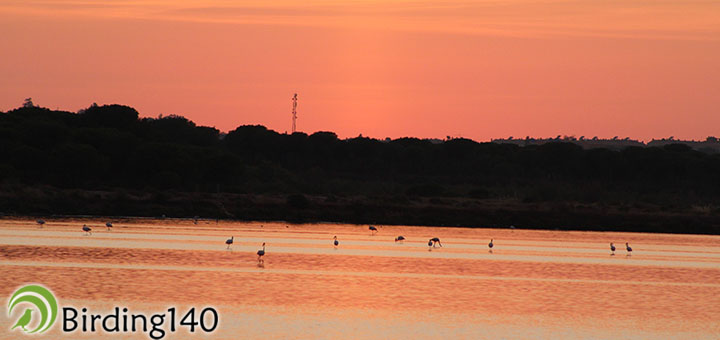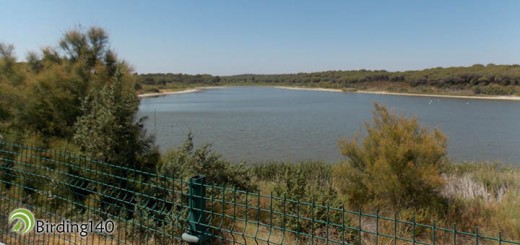In the southwest of Andalusia, in the early afternoon, we could take a break from the summer heat wave. The subtle saltpetre smell from the saltmarshes made us imagine the possible sightings awaiting us in the marshlands, the estuaries, the plains, the dam and the saltmarsh itself. Meanwhile, a small flock of flamingos crossed the air above our heads and arrived close to the huge piles of extracted salt.
We entered the premises of the interpretation centre, which was inexplicably closed at that time. Besides hosting an ornithological station, the centre has an austere but useful architecture. It is locally named after the nearby canal “La Calatilla”, although its official name is Anastasio Senra. He was a naturalist from Huelva who defended the protection of these marshlands until his sudden death. The parking lot is dotted with palm trees and small vegetation, and has an exceptional view to the bay of Huelva.
Our guide Manu Mojarro, who has a remarkable knowledge of the area, invited us to get into the van. He is the real engine of Spoon Trips and dedicates himself to disclose the best natural settings of the southwest of Andalusia. Without leaving the area, the vehicle set course to the city of Huelva. From the improvised balcony to the capital, our guide told us that in a recent excavation carried out in one of the city’s promontories — which are called hillocks in these lands — they found some small owl-shaped idols. This proves how the ancestors that inhabited the elevations in front of the natural area managed to reflect, in the small limestone pieces of the third millennium B.C., what those sunsets full of birds evoked in their primitive minds. At that point, two Red-rumped Swallows interrupted the thoughts about our ancestors. With this prelude, the evening was becoming interesting when it comes to sightings, and we left the premises following the road that crosses this area and leads to the dam stealing a few metres from the sea.
We stopped on the right margin of the road to step out and watch one of the winged jewels that can be seen in this landscape if you are lucky. Far away, a rustic wooden platform supported the future of the Osprey in this natural area. The watchtower reminded more of a Roman military invention than of the artificial nest of one of the five Osprey couples that live there.
The two specimens were jealously guarding their chick. One of them was watching over a windowsill, while the other decided to leave the nest before our astonished look and take a recognition flight before briefly greeting the chick covered in white down feather and returning to the nest. It is overwhelming to know that we are fortunate to enjoy these views and that we had to wait almost thirty years in order to enjoy the nesting of this impressive bird of prey in Spain.
It was in 2009 when, after a planned and thorough reintroduction project with Scottish, Finnish and German specimens, the birth of new chicks was achieved. In this green area, Ospreys have found the ideal place to carry out their daily activity. The natural space is completely adapted to their needs – besides having their favourite food and towers to nest, here and there appear improvised watchtowers in the form of poles, markers or trunks that would not make any sense to a stranger.
Back to the road before crossing the impressive drawbridge, the huge Monument to the Discoverer Faith was standing out in the distance. The enormous figure evoked and took us to Friday, 3 August 1492, when Christopher Columbus’ caravels sailed from the Saltes Island crossing these waters.
A male Montagu’s Harrier took us back to reality by crossing the road in a low flight and disappeared into the brush. After crossing the bridge, we met the locals, who go there to enjoy the newly formed beach created along the dam. In the sea, the vessels transporting gas or fuel were approaching the buoys that receive the load from the water. We continued on the road and Manu stopped the vehicle to show us a specimen of Collared Pratincole above an earth slope on the left. The beauty of this bird, which seemed to be painted with charcoal and pastel, was only the prelude of what awaited us after climbing the top of the slope.
Before us was the biggest Common Tern colony in Spain, at boiling point with about 1200 couples. This is precisely why this area has been catalogued as Marine IBA (Important Bird and Biodiversity Area). There was a big bustle: the specimens were making an effort to brood their eggs, guard their nests and overflow them with the beak full of freshly caught fish. But the new artificial beach formed with the discharge of the dredging of the Odiel River had more surprises for us.
Besides Collared Pratincoles, Little Terns and terns, a few Audouin’s Gulls were squeezing together, as if they were scared by the bustle. After returning from the opposite direction of the road, we stopped in an estuary to enjoy the activity of the most representative waders of this environment. Black-tailed Godwits, Dunlins, Common Ringed Plovers, Kentish Plovers, Eurasian Curlews, Whimbrels and spoonbills are some of the species that stand out. The latter use this area as an important wintering location, as well as a nesting place, so it is possible to enjoy them throughout the year.
The visited continued and we entered the restricted area of the marshland, where the last surprise was awaiting us. From 2009, about 7000 pink flamingos engage in the breeding of their chicks. This, together with the fact that thousands of specimens reach the place in order to feed themselves, creates an unforgettable show. The succession of reddish wings, the specimens in flight, the take-offs and landings in the salty water, they all add to the continuous nasal trumpeting of the colony, which immersed us in an almost tantric relaxation. It was impressive to see the nursery formed by the adults surrounding the about 3500 chicks that are born in Huelva each year. Last year 2500 couples bred, and the previous year, about 900 couples.
At some point, Manu stepped out of the vehicle and collected some water from the marshland. In the small water bottle, a tiny aquarium appeared before our eyes, revealing the secret and nourishment of the flamingos. The brine shrimp is without a doubt the real engine of this ecosystem, besides being the responsible of the pinkish colour of its most famous inhabitants. The small shrimps were nervously moving up und down the plastic container, waiting for a release that would happen after the appropriate explanation.
The marshlands slowly gobbled down the sun, in a variety of red and ochre colours, while the flamingos crowded around to spend the night. The evening was falling with the last sunrays, reducing the rhythmical trumpeting of the colony. The red figures made us think about the evolution of their Latin name, flama.
The image of their necks contorting backwards to put their heads between the feathers and bend one of their legs to remain in balance on the other evokes the dance that bears their name. There is no doubt that the elegant moves of their neck as in slow motion, and the cheekiness of supporting their weight on just one leg, transport us to the bewitchment and charm of the typical flamenco dance.
With no time left, our guide took the van along dusty roads between pinewoods and dunes for the possibility of seeing some mammals. However, we were not lucky, and just a small leveret crossed the road and was petrified by the headlights of the vehicle. After the mainland retour we crossed the marshland again and got to the road in front of the interpretation centre. It was without a doubt an interesting field day sighting the winged jewels of this amalgam of ecosystems that look like life fractals from the air.
From these last lines, we want to thank Manu Mojarro, real connoisseur of all the secrets that are hidden in the intricate ecosystems of this area. Thank you, friend: without your help, we would not have been able to write this post. We hope we can return to Odiel soon.

